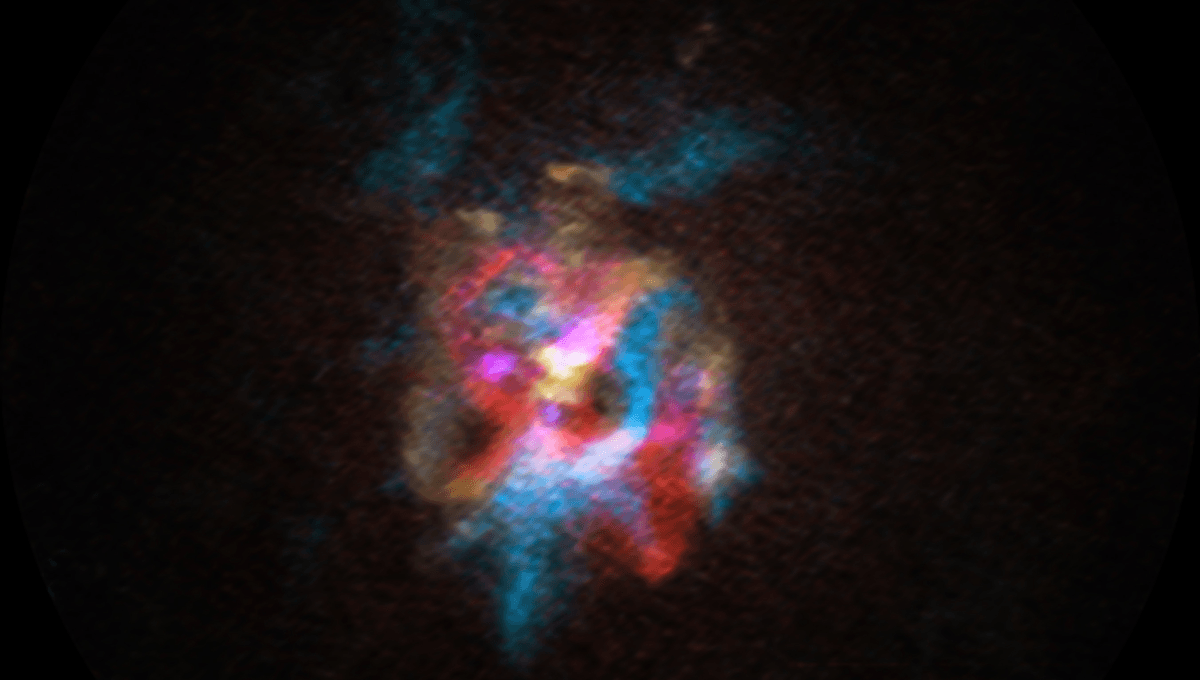Supergiant Star Spotted Blowing Milky Way’s Largest Bubble Of Its Kind, Surprising Astronomers

Supergiant Star Spotted Blowing Milky Way’s Largest Bubble Of Its Kind, Surprising Astronomers
The star DFK 52 has thrown off 0.1-1 times the mass of the Sun over the last 4,000 years, creating a truly enormous bubble in space in a crowded star cluster. The observations are particularly intriguing because of the star’s apparent similarity to Betelgeuse.
The rest of this article is behind a paywall. Please sign in or subscribe to access the full content. Aging giant stars, like stock markets and supporters of West Ham, are forever blowing bubbles. Eruptions cause them to throw off gas and dust, which then become inflated by their powerful stellar winds. However, when the Atacama Large Millimeter/submillimeter Array (ALMA) looked at DFK 52, it found a bubble on a remarkable scale, stretching 2.8 light-years from side to side – about two-thirds of the way from here to Alpha Centauri – making it the largest structure of its kind ever seen in the Milky Way. “We got a big surprise when we saw what ALMA was showing us. The star is more or less a twin of Betelgeuse, but it’s surrounded by a vast, messy bubble of material,” said Dr Mark Siebert of Chalmers University in a statement. The team that made the discovery noted that if Betelgeuse had done the same thing, the bubble would be a third the width of the full Moon from our perspective. Moreover, it’s still growing, with the rate allowing astronomers to estimate the origin time. It’s also 3-4 times larger than the bubbles blown by stars that appear to be obvious counterparts. “The bubble is made of material that used to be part of the star. It must have been ejected in a dramatic event, an explosion, that happened about 4,000 years ago. In cosmic terms, that’s just a moment ago,” said Dr Elvire De Beck. Although DFK 52 is still losing mass, this has now slowed to about an Earth-mass a year. This makes the event an extreme example of a phenomenon astronomers have been struggling to explain – why old supergiant stars sometimes undergo major explosions without fully going supernova. The most famous example is Eta Carinae, which in the mid-19th century dramatically jumped to become the second brightest star in the sky after such an event, before eventually fading back to being invisible to the naked eye. That’s nothing to what an Eta Carinae supernova (or hypernova) will eventually look like, when the only meaningful comparison will be with the brightness of the Moon. In Eta Carinae’s case, it is thought the activity was related to the influence of a companion star, enormous by most standards but still much smaller than the giant primary. One obvious question then is whether DFK 52 also has a companion, which might have contributed to the event. We might also wonder if Betelgeuse’s likely companion might trigger something similar. Such explosions may be a premonition of supernova events, or they may delay them. Either way, however, it’s almost certain DFK 52 will get there sooner or later. DFK 52 is in the Stephenson 2 open cluster, a group of stars 19,000 light-years away that were all born around 17 million years ago. It’s emitting about 20,000 times as much light as the Sun, although amazingly, it’s a long way off being the brightest member of the cluster. The Stephenson 2 open cluster contains stars so bright that DFK 52 is comfortably outshone. Image Credit: NASA/JPL-Caltech/IPAC Smaller members of the cluster are at early stages of their lives, but the more massive a star is, the faster it ages, so DFK 52 has reached red supergiant status. The density of nearby stars may explain why the shape of DFK 52’s bubble is more complex than we are used to seeing, although the authors are not convinced of this. “We’re planning more observations to understand what’s happening – and to find out whether this might be the Milky Way’s next supernova. If this is a typical red supergiant, it could explode sometime in the next million years,” said Elvire De Beck. The study is open access in Astronomy and Astrophysics.


